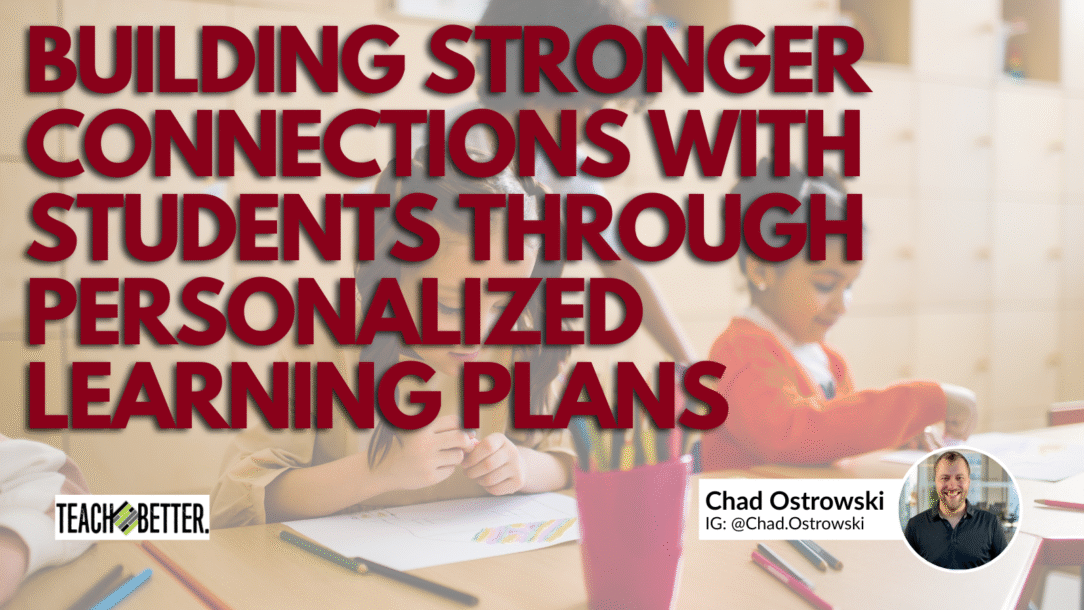If there is one thing in education that gets touted as a cure all for everything its “student relationships” and connections. While I will absolutely say these are critical to educational success in any school, district, or classroom, finding the right way to achieve this connection can be challenging. Not only are we facing a population of learners that is more disengaged and has shorter attention spans than ever. Our most challenging students and learners also tend to distance themselves from the process of education entirely.
This is not a new battle, and you’ve probably read countless articles and blogs (maybe even this one) on how to cultivate a culture of connection and build relationships with students so I’m not going to talk about traditional ways of approaching this but hopefully take a different approach.
Let’s assume you’ve created a kind, welcoming, positive culture of trust and community in your classroom. You smile, joke around, and have great conversations with students, but still find it challenging to making those meaningful connections that will help you reach your goals…especially with the most difficult students.
At this point I want to ask a simple question: Does your instruction support the connections, relationships and culture you are building?
We often separate pedagogy and instruction from culture, relationships, and instruction in the classroom. I disagree with this approach entirely.
Competing Ideas.
Even the teachers that go the extra mile with things like SEL and positive student interactions can easily “switch gears” from that hallway conversation or pre-class joke to instruction that sends a very different message. This is One of the most common things we see when we are training on student centered and personalized learning plans with schools.
Teachers always seek connection, but many times their instruction doesn’t really allow it. If you are using an instructional style that is passive for learners with little or no interaction, it’s not likely to support the culture you’ve create outside of that time. This essentially tells the learners subconsciously ‘I value you and these relationships outside of instructional time, however when we get to the crux of our purpose here (learning) they no longer matter.’
I realize that’s a bit drastic and very few classrooms have “no” interaction, but I think my point is easy to understand.
In contrast, personalized learning plans and learning progressions can help teachers create an environment that is student-centered and fosters more interaction, conversations, and yes…connection.
[scroll down to keep reading]How Personalized Learning Plans Improve Connection.
While creating personalized learning plans and progressions for students won’t do ALL the heavy lifting, they can provide a framework and foundation to help foster better connections with students. When teachers implement personalized learning plans, they create student-paced learning paths for students to follow. These plans include voice and choice within the progression, and assessments built to demonstrate mastery throughout.
This ensures that students are working within their zone of proximal development as well as learning to the rigor of standards consistently. More importantly to this conversation however, it drastically increases student – teacher interaction. When teachers and students interact more, their relationships and connections improve, period.
Every time a student needs to have their learning assessed for mastery is an opportunity for conversation. As they are independently working through the learning plan / progression they will be more likely to ask questions that open opportunities for engaging with them. The more personalized pace and pathways for learning will also allow them to more fully engage, and therefore be more eager to get help than in traditional models.
Working with schools to implement personalized mastery learning and student-centered practices over the past decade has consistently provided amazing results. Additionally, teachers continually tell us how much better they know their students, and how much more connected they feel to their learners and their growth within the classroom.
Where to start?
Getting started with personalized learning plans, learning progressions, or mastery learning can be a lot. It can be daunting and even scary for a lot of educators. We have a ton of resources including blogs and free courses, or you can always just reach out if your interested in learning more. We can even visit and teach your whole team if you want. Just ask!
Regardless of where you start, if you’re looking to improve your connection with students…start with instruction first.
About Chad Ostrowski
Chad Ostrowski is the co-founder of the Teach Better Team, and creator of The Grid Method. He is also a co-author of the Teach Better book. But Chad is a middle school science teacher at heart. He now travels the country sharing his story, working with teachers, schools, and districts to help them to reach more students. Chad is also a member of the Teach Better Speakers Network.



